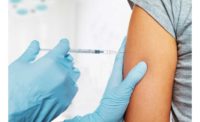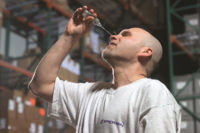 Officials from the Centers for Disease Control and Prevention (CDC) and pediatricians are frustrated that large numbers of U.S. teens are not receiving HPV vaccinations – something that can prevent a sexually transmitted disease which is often linked to cancer.
Officials from the Centers for Disease Control and Prevention (CDC) and pediatricians are frustrated that large numbers of U.S. teens are not receiving HPV vaccinations – something that can prevent a sexually transmitted disease which is often linked to cancer.
In a recent press conference, the CDC and the American Academy of Pediatrics announced that HPV vaccination rates in girls aged 13-17 years failed to increase between 2011 and 2012, according to data from the Centers for Disease Control and Prevention (CDC). Three-dose coverage actually declined slightly from 2011 to 2012.
Among girls unvaccinated for HPV, 84 percent had a health care visit where they received another vaccine (such as one aimed at meningitis or pertussis) but not HPV vaccine. If HPV vaccine had been administered, vaccination coverage for ≥1 dose could be nearly 93 percent rather than 54 percent.
The cancer connection
"Progress increasing HPV vaccination has stalled, risking the health of the next generation.," said CDC Director Tom Frieden M.D., M.P.H. "Doctors need to step up their efforts by talking to parents about the importance of HPV vaccine just as they do other vaccines and ensure its given at every opportunity."
According to CDC, for each year the 3-dose HPV vaccine series coverage remains near the current level of 33 perccent instead of achieving the Healthy People 2020 goal of 80 percent coverage, an additional 4,400 women will be diagnosed with cervical cancer and 1,400 cervical cancer-attributable deaths will occur in the future.
Reasons for not vaccinating
The 2012 NIS-Teen data show that not receiving a healthcare provider's recommendation for HPV vaccine was one of the five main reasons parents reported for not vaccinating daughters. Healthcare providers are urged to give a strong recommendation for HPV vaccination for boys and girls aged 11 or 12 years.
The other responses parents provided indicate gaps in understanding about the vaccine, including why vaccination is recommended at ages 11 or 12.
"Parents need reassurance that HPV vaccine is recommended at 11 or 12 because it should be given well in advance of any sexual activity," said Dr. Frieden. "We don't wait for exposure to occur before we vaccinate with any other routinely recommended vaccine."
Parents also reported safety concerns as a reason for not vaccinating. In the seven years of post-licensure vaccine safety monitoring and evaluation conducted independently by federal agencies and vaccine manufacturers, no serious safety concerns have been identified. According to a CDC Morbidity and Mortality Weekly Report (MMWR), reports of adverse events after HPV vaccination to the Vaccine Adverse Event Reporting System (VAERS) have steadily decreased from 2008 to 2012 and the numbers of serious adverse events reported has also declined since 2009.
14 million infected each year
Approximately 79 million Americans are currently infected with HPV. About 14 million people become newly infected each year. HPV is so common that nearly all sexually-active men and women will get at least one type of HPV at some point in their lives.
Parents and caregivers are encouraged to ask about vaccination every time they take children for a healthcare visit. If a preteen boy or girl (aged 11 or 12 years) has not started the HPV vaccine series, make an appointment to get him or her vaccinated. Teens who haven't started or finished the 3-dose series should do so—it's not too late for them to receive HPV vaccine.
Because of the Affordable Care Act, most private health insurance plans must cover the HPV vaccine at no out-of-pocket cost, meaning no co-pay or deductible. Visit www.healthcare.gov/what-are-my-preventive-care-benefits/#part=3 for more information.
CDC officials urge healthcare providers to increase the consistency and strength of how they recommend HPV vaccine, especially when patients are 11 or 12 years old. Reviewing vaccination status at every healthcare encounter and taking advantage of every visit, including acute care visits, can increase HPV vaccine coverage in the United States.

